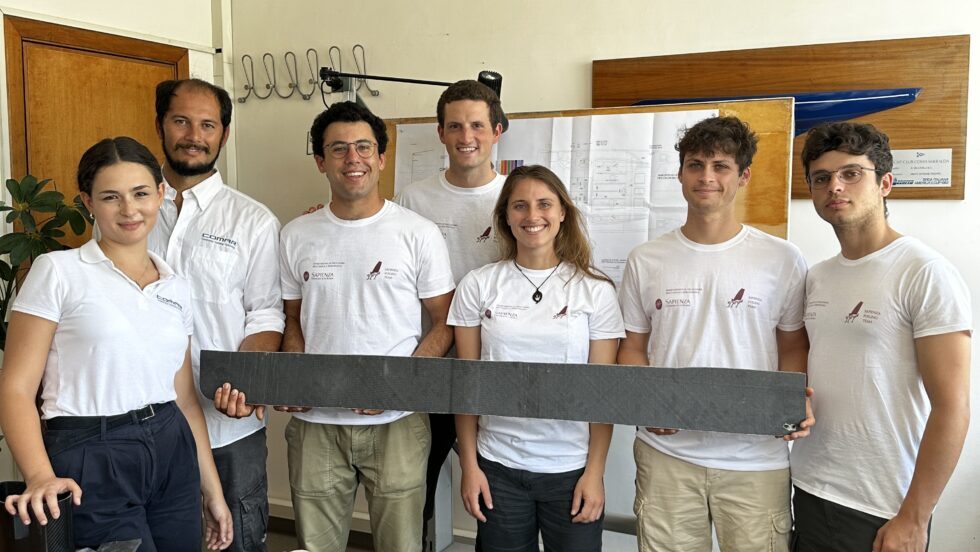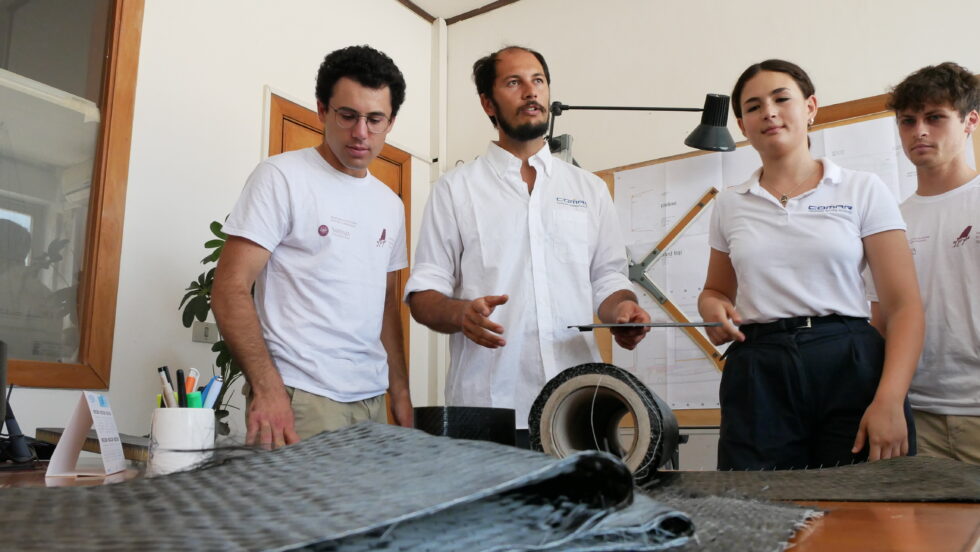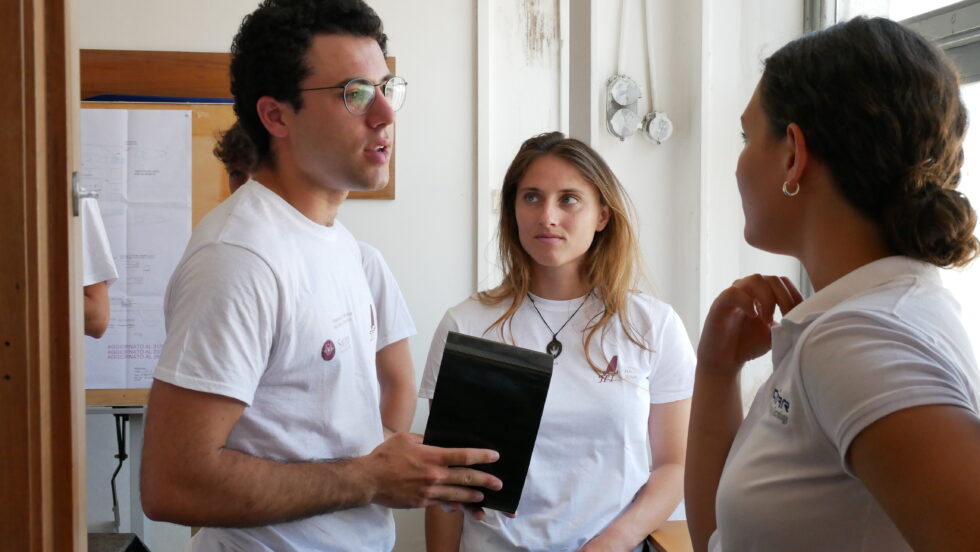This week marks an important milestone in the partnership between Comar Yachts and Sapienza University of Rome. At the Foiling SuMoth Challenge (FSMC), Federico Romeo from the Department of Mechanical and Aerospace Engineering is unveiling the first phase of an ambitious project: the creation of the most sustainable and efficient foiling International Moth (IMCA) ever built.
For Comar Yachts, a name synonymous with Italian craftsmanship and innovation, this collaboration is more than sponsorship—it is a commitment to shaping the future of boating. By supporting the next generation of engineers and sailors, Comar Yachts reinforces its dedication to advancing technology, sustainability, and performance in the marine industry.
Turning Waste into Innovation
The initiative is rooted in a powerful idea: transforming production waste into high-performance components. At Comar Yachts’ shipyard in Fiumicino, the Sapienza team was given access to leftover materials from the construction of large Comar catamarans, vessels that measure nearly 20 meters in length.
Though small compared to a 65-foot catamaran, these offcuts proved invaluable for the students’ 3.35-meter foiling Moth prototype. “At the Fiumicino shipyard, we found extremely interesting materials for our project,” said team leader Federico Romeo. “The composite sheets, ready-made and easy to shape, came mostly from bulkhead offcuts or from the processing of portholes. While they are small compared to what’s used on a large catamaran, they are perfect for our needs.”
The same approach was applied to resins and carbon fiber. Excess resin from yacht construction was collected and repurposed to produce many, if not all, of the Moth’s components. Meanwhile, unidirectional and bidirectional carbon scraps were used as reinforcements, carefully adhering to IMCA regulations that cap carbon usage at two kilograms.
A Circular Economy for Sailing
This partnership highlights how Comar Yachts integrates circular economy principles into its operations. By reusing production scraps that would otherwise go to waste, Comar not only reduces environmental impact but also enables groundbreaking student-led projects in marine engineering.
The Foiling SuMoth Challenge itself is an international competition that encourages teams to design, build, and race sustainable foiling boats. For Comar Yachts, participation in this initiative aligns perfectly with its long-term vision: yachts that are not only fast and elegant but also increasingly eco-conscious.
Sailing Toward a Sustainable Future
For decades, Comar Yachts has been recognized for its craftsmanship, performance, and ability to combine tradition with innovation. Supporting young innovators at Sapienza University demonstrates the brand’s leadership role in ensuring the next generation of sailors and engineers have the tools to advance boating technology responsibly.
This collaboration also bridges two worlds: the advanced construction of luxury cruising yachts and catamarans like the C-Cat 38, C-Cat 48, C-Cat 56, and flagship C-Cat 65, and the cutting-edge research behind smaller, experimental prototypes like the Moth. The lessons learned from lightweight, sustainable materials in projects like this one could one day influence the future of large-scale yacht design.
Comar Yachts: Where Innovation Meets Responsibility
By investing in sustainability and education, Comar Yachts confirms its commitment to innovation that benefits not only today’s sailors but also tomorrow’s oceans. The partnership with Sapienza University’s Foiling Sailing Team is a clear example of how collaboration, creativity, and eco-conscious engineering can redefine the future of sailing.



